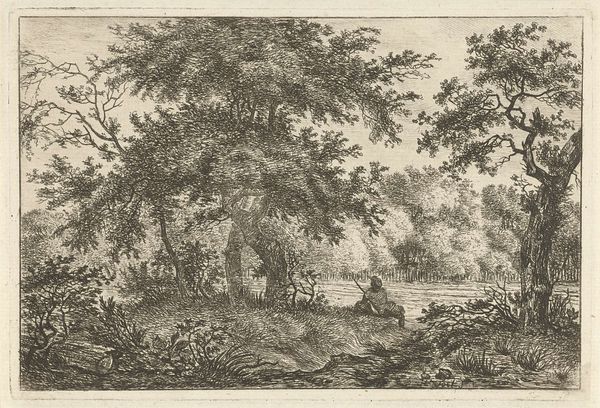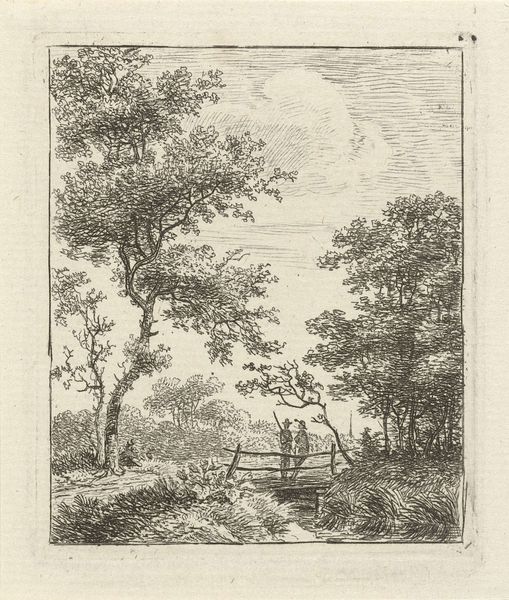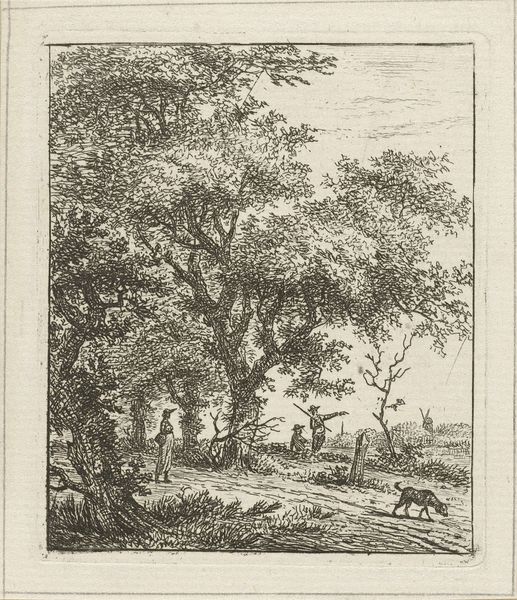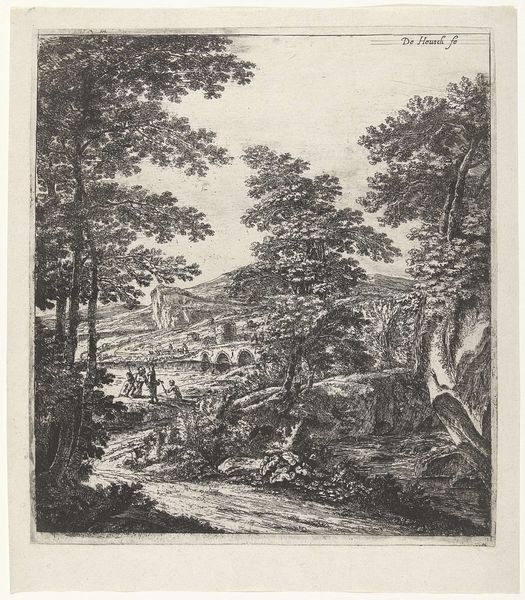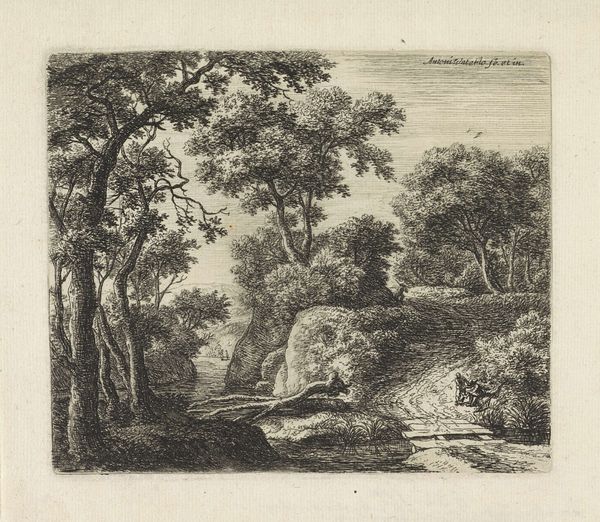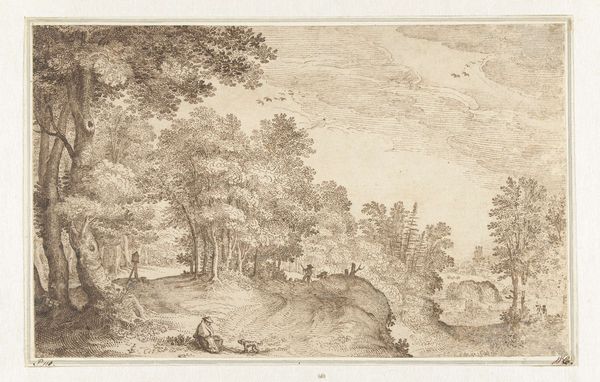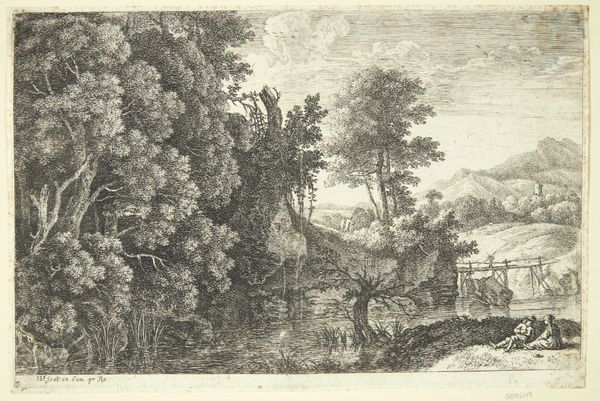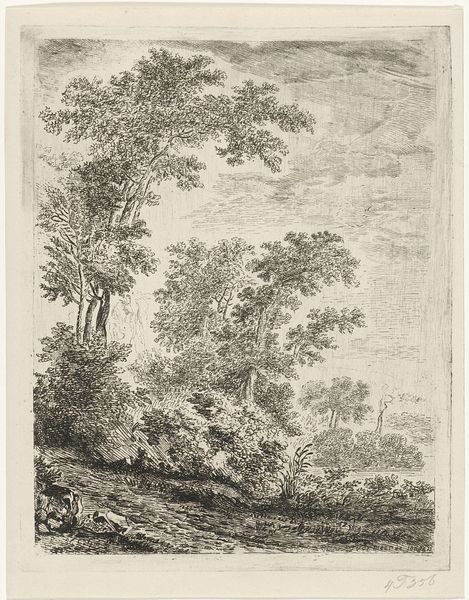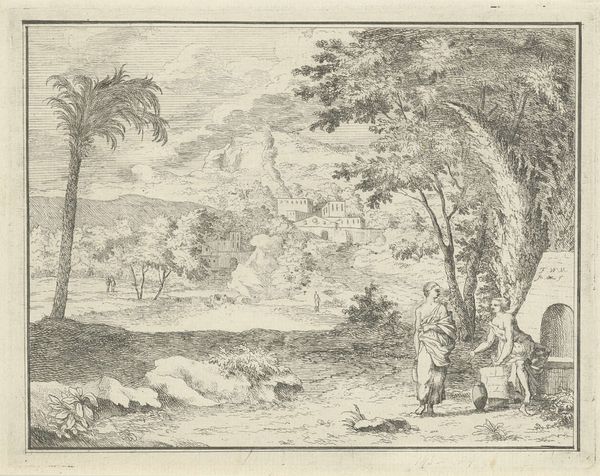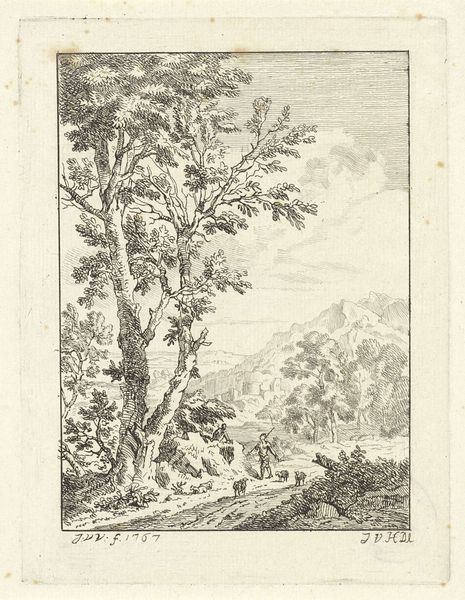
print, etching
# print
#
etching
#
landscape
#
figuration
#
romanticism
#
genre-painting
Dimensions: height 320 mm, width 248 mm
Copyright: Rijks Museum: Open Domain
Curator: Hermanus Fock created this piece, “Landscape with Woman by the Water's Edge," sometime between 1781 and 1822. It’s currently held at the Rijksmuseum, and it’s a compelling example of landscape etching during that period. Editor: My first impression is one of quiet serenity. The monochromatic palette lends a timeless quality, while the detail, achieved with the etching technique, invites close inspection. It feels both familiar and somehow remote. Curator: The Romantic style is definitely present here. We see an emphasis on the beauty of nature, rendered with a sense of idealized tranquility. Notice how the woman is placed within the landscape—almost subordinate to its grandeur, but still the focal point of the viewer. Editor: The figures interest me. Two people resting by the water, seemingly disconnected from the labour taking place behind them. I wonder about the social implications—leisure vs. work, perhaps. Curator: That tension is precisely what makes this piece so engaging. Landscapes during this time were rarely just about aesthetics; they often served to subtly comment on social structures and the role of humanity within the natural world. The burgeoning industrial revolution also casts a shadow—this etching offering an escape to a pastoral, idealized past, increasingly under threat. Editor: Absolutely. And I appreciate the way the scene, although pastoral, doesn't shy away from including elements of labour in the background. The human cost that underpinned such 'idyllic' scenery is still visible. I’m drawn to considering it from a feminist perspective too. What can be understood about labour if the primary focus is on female rest and female relationships? Curator: Fock, like many artists of his time, walked a tightrope between tradition and burgeoning modern sensibilities. He provided imagery that reaffirmed existing values, yet hinted at the seismic shifts on the horizon, always shaped by social currents. Editor: Ultimately, pieces like this force us to question the power dynamics inherent in how we frame “beauty” and how the concept is intertwined with labour, class, and identity. It offers so much fertile ground for reflection and reimagining, even today. Curator: It is those layers of meaning, I believe, that make this etching a timeless and enduring piece in the Rijksmuseum collection. Editor: A poignant invitation to pause and consider the narratives embedded in the natural world.
Comments
No comments
Be the first to comment and join the conversation on the ultimate creative platform.
